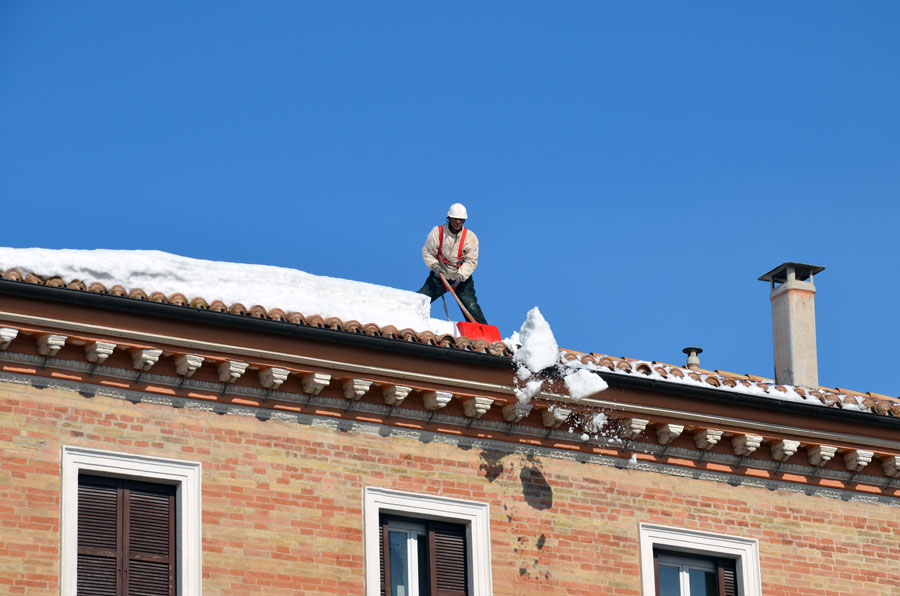Blog
Slips, Trips and Falls: OSHA’s New Walking and Working Surfaces Standard
Earlier this year, OSHA introduced a new walking and working surfaces standard for general industry, which can be found in Subpart D of 29 CFR 1910. In May 2017, employers were required to have trained their employees on fall hazards in the workplace, as well as how to use the appropriate fall protection equipment.
The most recent deadline was for the inspection of permanent anchorages for rope descent systems. In this standard, the building owner is required to provide the employer with proof of this inspection by a qualified person by Nov. 20, 2017 and then as needed, and at least every 10 years.
Let’s explore this new standard, its implications and how employers may be cited as a result.
The New Standard: What You Need to Know
This new regulation seeks to more closely align general industry with existing construction fall protection standards, in addition to providing greater flexibility for general industry employers when complying with the standard. This flexibility can be found in the standards allowance for systems other than guardrails for general industry work on low slope roofs. Section 1910.21 defines a low slope roof as follows: “Low-slope roof means a roof that has a slope less than or equal to a ratio of 4 in 12 (vertical to horizontal).” For example, in the chart below, the first four roofs in the top row qualify as low slope.
When non-construction work on low slope rooftops is 6 feet or greater from the edge and is both temporary and infrequent, the employer can choose to implement travel restraints, fall arrest systems, or safety net systems, whereas prior to this regulation change, hand rails were the only option.
Additionally, when work is done 15 or more feet from the edge and meets the previous qualifications, an employer can institute a strict work rule, warning line and designated area. The warning line must meet very specific and stringent standards, so be sure to check those out in 1910.29(d) before deciding to use this method.
Employer Liability
Perhaps the most interesting stipulation in the standard can be found in one of the more mundane phrases in 1910.22 (a)(3). The standard requires employers to ensure that “walking-working surfaces are maintained free of hazards such as sharp or protruding objects, loose boards, corrosion, leaks, spills, snow and ice.”
This simply means that a sharper focus is being put onto all things slip, trip and fall related. In addition, the new standard requires “regular” and “as-needed” inspections for all walking and working surfaces so that they can be “maintained in a safe condition.”
For most employers, falls are one of the top three loss sources in terms of both frequency and severity, so this may present an interesting challenge as OSHA becomes more familiar with and comfortable with citing under this standard.
One example of how this could be applied might involve general housekeeping in manufacturing or logistics. In aisles where debris can tend to collect and an employee has a serious injury from tripping over a band or pallet, this standard could be used to cite the employer for not maintaining safe conditions in the area.
Another example could be stairs which do not meet the standard secondary to being non-uniform in height, too high (a riser height greater than 9.5 inches) or too shallow (a tread depth of less than 9.5 inches).
Another possible obstacle might be keeping ice off of pathways. OSHA will now have a specific standard to use in citing employers secondary to falls or complaints related to ice in freezer areas or even on walkways outdoors.
In addition to what we’ve already discussed, Subpart D also:
- Outlines physical parameters for fixed ladders, as well as use of personal fall arrest systems on new fixed ladders over 24 feet, and provides a long-term plan to replace current fixed ladder cages with fall arrest systems.
- Outlines physical parameters for mobile ladder stand platforms and mobile ladder stands.
- Eliminates exemptions for certified climbers in the outdoor advertising industry.
- Updates general industry scaffolding requirements.
- Places limitations on heights at which rope decent systems can be used.
- Provides mandates around fall protection equipment: use, maintenance, performance, and inspection.
- Adds specific requirements around training and re-training related to recognition of hazards and use of fall protection systems.
- Slightly adjusts landing sizes and restates some parameters around step rise and run, as well as other parameters for side step ladders, hole coverings and protection.
If you are in one of the 26 OSHA State Plan states, such as California, Washington or Hawaii, you may not be able to take advantage of some of the low slope roof allowances in the federal standard, at least for the time being.
Because of its complex nature, it may take longer than usual for some states to adopt this regulation. Some states may ultimately decide not to adopt it and to continue with more restrictive regulations.
To learn more about these federal regulations, visit the OSHA website or feel free to send questions on walking and working surfaces to your Woodruff Sawyer account team.
Author
Table of Contents













